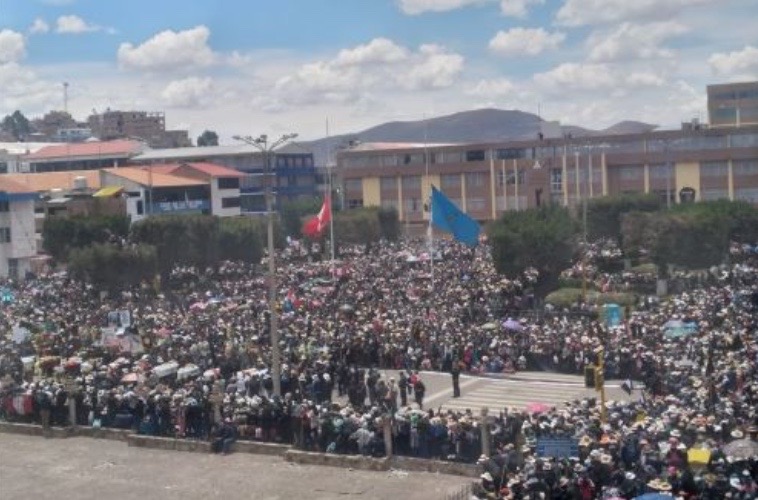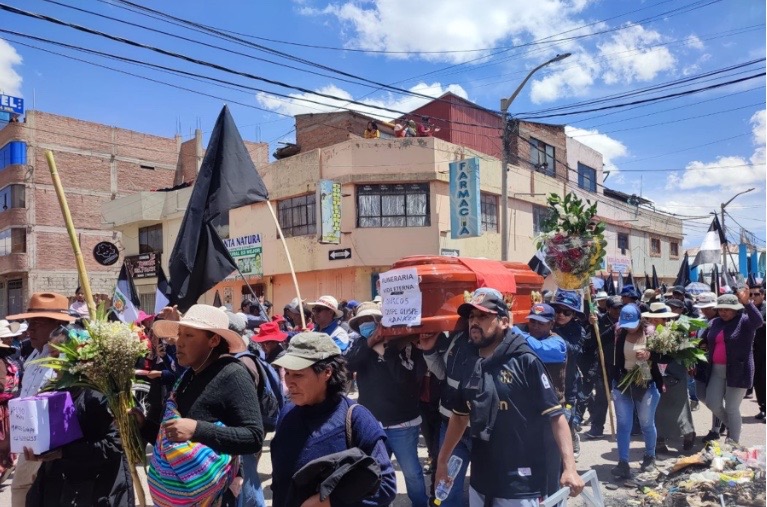
THE RUNDOWN
While there has been continuous political strife in Peru over the last few years, this tension reached new heights in late 2022. In early December, then-President Pedro Castillo faced his third impeachment, leading him to attempt to dissolve the nation’s Congress under an emergency declaration. His efforts were short-lived as he lost support from the police, military, and government officials, ultimately ending with his impeachment and arrest. After his arrest, Peru’s Vice President Dina Boluarte assumed the presidency, and mass protests followed.
Only in office for eighteen months, Castillo gained a significant following among Peru’s labor unions and those that consider themselves indigenous. Viewed as a “champion of the poor”, Castillo is the son of peasant farmers and is very popular among the impoverished as well. These groups, along with many other individuals, believe that Castillo’s impeachment and arrest are illegal, and an attack on an already fragile political system. Castillo has been active on his Twitter, reaching out to his supporters to express his concerns over his impeachment and condemning the actions of now-president Boluarte.
In response to the protest, Boluarte declared a thirty-day state of emergency, activating the military and placing restrictions on the right to assemble. While this is his constitutional right as president, many individuals in Peru view this as yet another attack on the political system.
The Protest: An Evolution of Violence
The majority of protesters are Castillo supporters who are demanding his release from prison, the resignation of President Boluarte, and re-elections. There have been significant protests across the country, stretching from the nation’s coastal capital to the mountainous regions. Since the beginning of the protests, there has been a rapid evolution of violence from both the protesters and the police.
December 7th marked the first day of significant protests in Peru, with demonstrators gathering in the nation’s capital to support Castillo. The following days illustrated the protesters’ tactics, which included blocking major highways, holding large rallies, and attempting to reach the Congressional building. Peru’s police responded to their actions using riot control techniques such as tear gas, batons, shield, and arrest. These initial protests resulted in approximately twenty injuries and the death of seven protesters. The protesters increased the intensity of their tactics on December 12th, when 2,000 protesters stormed the international airport in Arequipa, causing all airport operations to cease.

Following the increasing number of arrests, injuries, and deaths, protesters began to increase their violence, with reports of a molotov cocktail attack at a police station and the burning of a prosecutor’s office. This rise in violence led President Boluarte to declare a state of emergency on December 14th, causing a significant shift in the government’s tactics against the protesters. Videos and images from this date show military personnel deployed to protect critical infrastructure and support the police. The activation of the military led to an increasing number of protesters being injured or killed, with reports of the military killing eight protesters in the city of Ayacucho.
On December 16th, the Inter-American Commission on Human Rights (IACHR) reported that 21 protesters were killed and 210 injured since the start of the protests. The IACHR also stated that 216 police officers were injured in relation to the ongoing protests. This rapid increase in deaths and injuries is directly related to both sides’ increasingly violent tactics. Social media videos show protesters using makeshift slingshots, bricks, and other weapons to assault the police and military. Other videos show the police using gas, batons, and increased force against protestors. Many protesters claim that the police and military are using excessive deadly force.
The protests carried on after December 16th, involving public rallies, blocking major highways, airports, and assault on police. In response, the police and military continued with their escalated force, with many claiming the force was excessive.
January 9th: The Deadliest Protest
After a slight lull in protests due to the holidays, the violence ramped up once again on January 9th. At least 47 people have been killed so far in the protests, including one police officer, and dozens more have been injured. This marked the worst day of violence since the protesting began.

Thousands of protesters in Juliaca attempted to overrun the airport and police station, resulting in 17 dead and 68 wounded. Henry Rebaza, a ministry official, reported that 28 police officers who were wounded during the clashes were unable to be evacuated from the airport. Police have been facing increasingly perilous situations as the protests continue. While on patrol in Juliaca, José Luis Soncco Quispe and his partner were attacked by a mob of roughly 350 protesters. Quispe’s partner was dragged from the vehicle, tied up, and badly beaten. Quispe, also restrained by the mob, sadly died after protesters set fire to his patrol car while he was trapped inside. While police have faced acts of violence, such as rocks and glass bottles thrown from slings, this incident is the worst attack on police yet.
THE TAKEAWAY
As violence continues to escalate, the Inter-American Commission on Human Rights has scheduled a visit to several cities in Peru to assess the situation. The deployment of Peru’s armed forces to aid police has raised some concern, as many question whether they have adequate training to handle such a mission without escalating it further. On December 15th, eight protesters were killed in an area where the military was deployed. Peru’s Armed Forces Joint Command did not comment on these deaths or the allegations that armed forces had been seen firing into crowds. Human rights advocates have cautioned that appropriate measures should be put in place to ensure police and the military are following the law when attempting to contain protesters. The allegations of human rights violations by security forces threaten to erode the public’s trust further and make possible negotiations with protesters even more difficult.
